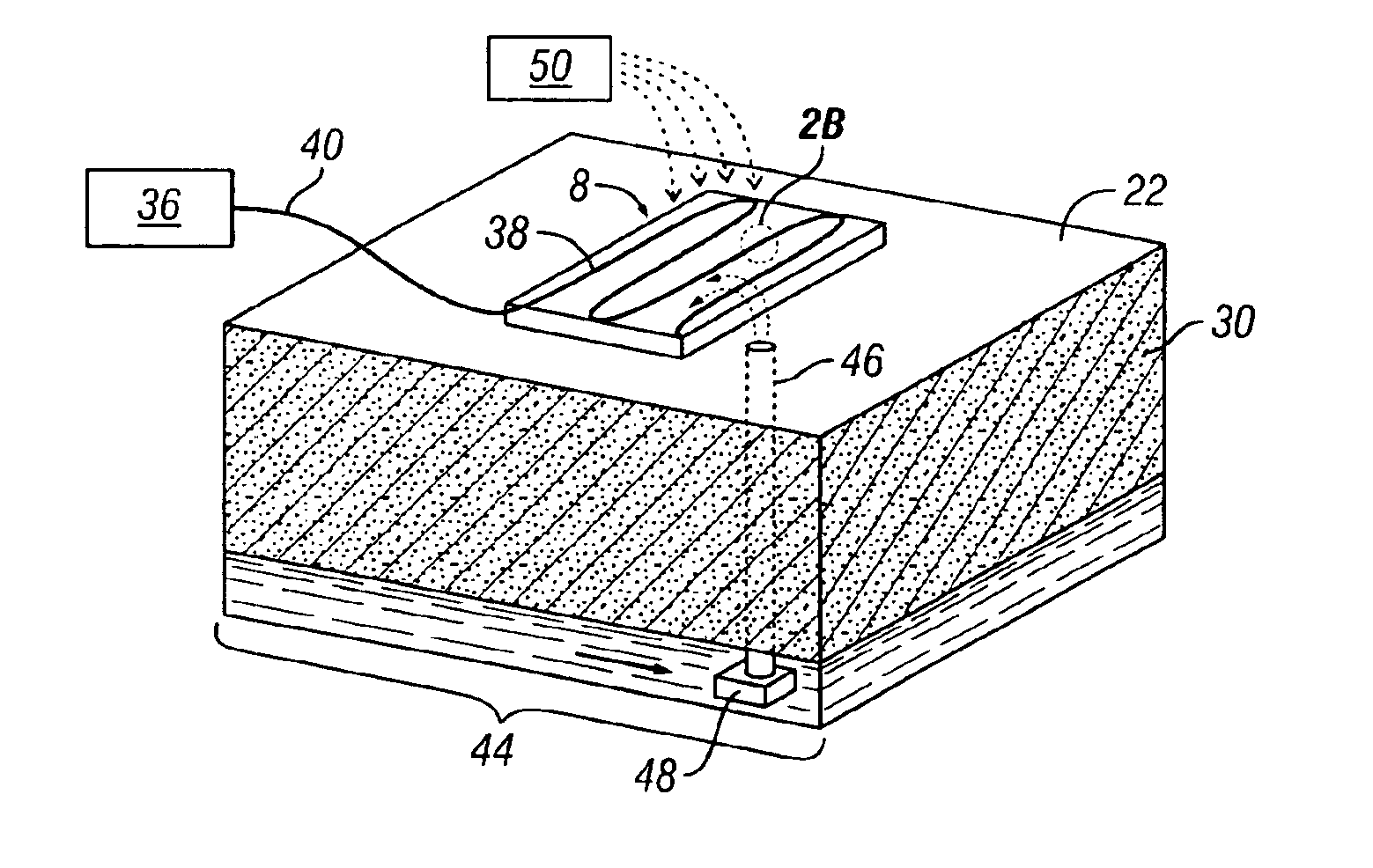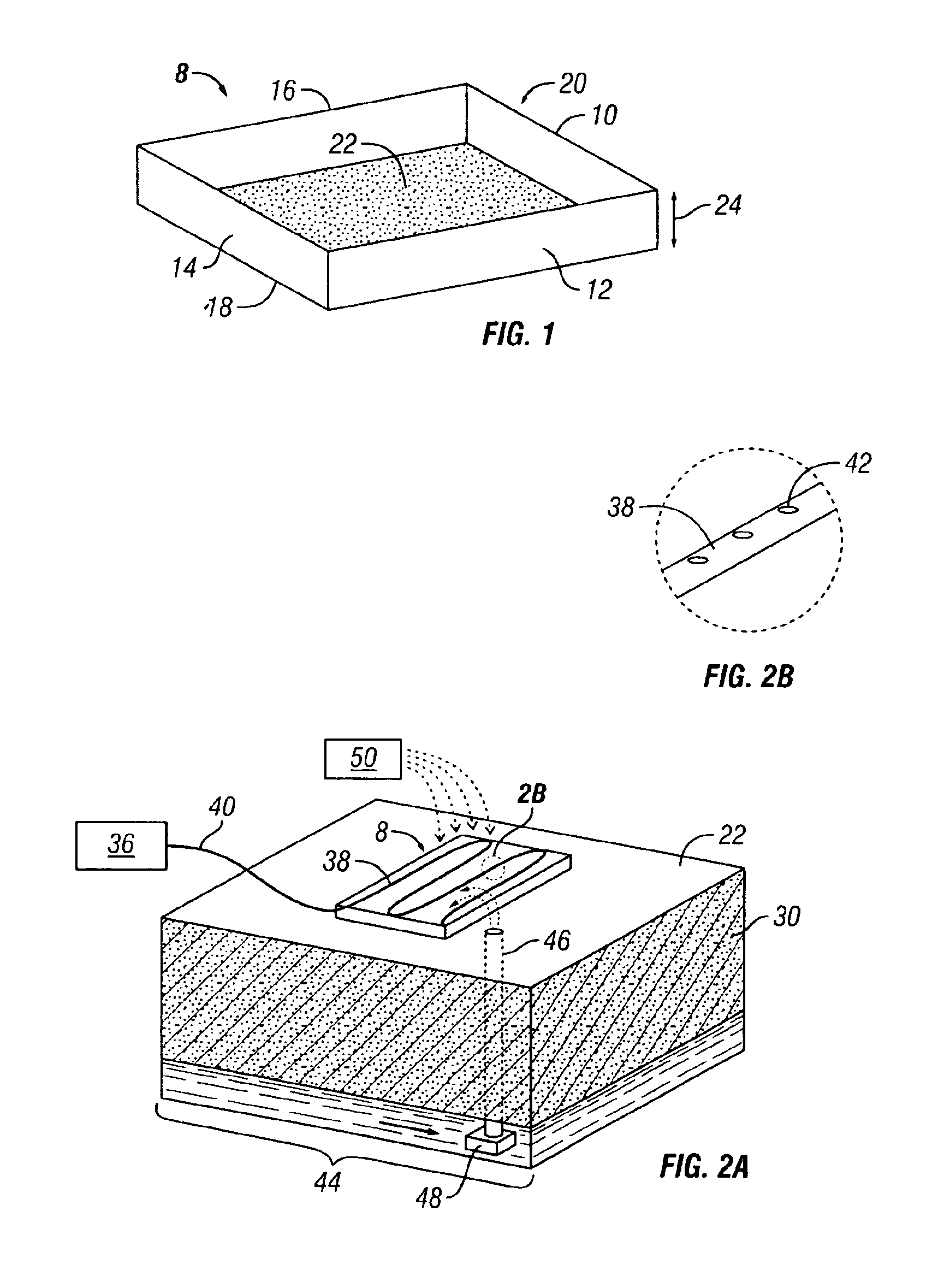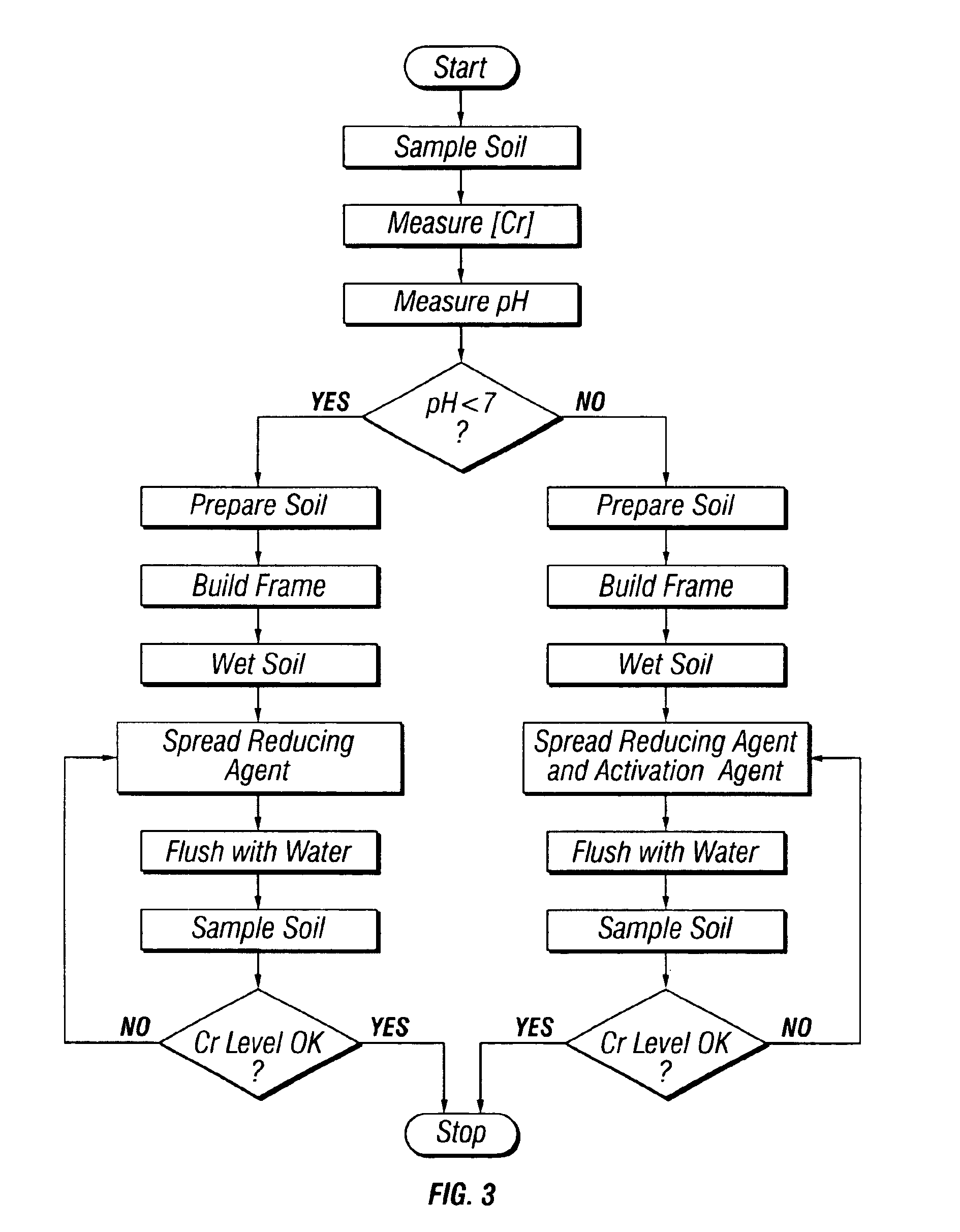In-situ process for detoxifying hexavalent chromium in soil and groundwater
a technology of hexavalent chromium and in-situ process, which is applied in the direction of contaminated waterways/lakes/ponds/rivers treatment, chemistry apparatus and processes, water/sludge/sewage treatment, etc., can solve the problems of chromium-containing soils and tailings, significant environmental problems, and inefficient large-scale processes. , to achieve the effect of reducing the risk of contaminated materials, reducing the risk of contamination
- Summary
- Abstract
- Description
- Claims
- Application Information
AI Technical Summary
Benefits of technology
Problems solved by technology
Method used
Image
Examples
example 1
[0070]Bench-scale tests were used to evaluate the viability of using domestic wastewater treatment biological nutrient removal (BNR) sludge and a chemical reducing agent (ferrous sulfate) to reduce hexavalent chromium to trivalent chromium. For these tests, soil samples were collected from the Patapsco Waste Water Treatment Plant (WWTP). The soil samples were sieved and rinsed, and debris, including pebbles, brick pieces, metal, wood, etc., was removed. The soil samples were then spiked with potassium dichromate and about 300 mL of the spiked soil samples were packed into 500 mL disposable filtration units (Cole Palmer Catalog No. A-06730-54). Two levels of spiked potassium dichromate soils were used: a higher level (“Spiked High”) containing about 450 mg / Kg of hexavalent chromium (or about 300 mg in each filtration unit), and a lower level (“Spiked Low”) containing about 150 mg / Kg of hexavalent chromium (or about 100 mg in each filtration unit).
[0071]Following the application of th...
example 2
[0080]A chromium tailing pile at the Pautuxent Waste Water Treatment Plant (WWTP) in Baltimore, Md. measuring approximately 100 m in length, 50 m in width, and 14 m in depth is required by the State of Maryland to be remediated to the standard of 5 mg / L chromium in TCLP. More than 200 samples have been taken from more than 60 borings and analyzed. The total chromium concentrations range from non-detect to 29,400 mg / Kg, and hexavalent chromium concentrations range from non-detect to 6,780 mg / Kg with the average estimated to be 200 mg / Kg. The EP Toxicity (a similar but early version of TCLP) chromium concentrations range from non-detect to 97 mg / L. The pH of the tailing ranges from 6.3 to 7.9, with the average being 6.9, and the average alkalinity exceeds 10,000 mg / Kg (mainly present as CaCO3), so that it would be economically prohibitive to lower the soil pH with bulk acid. The specific gravity of the soil is 2.3.
[0081]The selected method of treatment for the pile is reduction with t...
PUM
| Property | Measurement | Unit |
|---|---|---|
| concentration | aaaaa | aaaaa |
| concentration | aaaaa | aaaaa |
| diameter | aaaaa | aaaaa |
Abstract
Description
Claims
Application Information
 Login to View More
Login to View More - R&D
- Intellectual Property
- Life Sciences
- Materials
- Tech Scout
- Unparalleled Data Quality
- Higher Quality Content
- 60% Fewer Hallucinations
Browse by: Latest US Patents, China's latest patents, Technical Efficacy Thesaurus, Application Domain, Technology Topic, Popular Technical Reports.
© 2025 PatSnap. All rights reserved.Legal|Privacy policy|Modern Slavery Act Transparency Statement|Sitemap|About US| Contact US: help@patsnap.com



